Heel Captivator
Position Information
And Cutaway Views

Note: All photos on this page feature “cutaway” configuration to improve clarity. Also take note that all views are shown minus the heel captivator liner for clarity. The purpose of this page is to show proper versus improper heel captivator position. Do not use this page for depiction of cable adjustment information.
1. Shown above is the correct “Home” position for the heel captivator. Clearly visible is the contoured shape of the heel captivator which evenly distributes pressure upon the delicate tissue of the heel bulbs.
Also shown above: In the toe, observe the ground contact point of the tread which is behind the forward most point of the hoof wall. This feature serves to keep break-over forces to a minimum. It is therefore important to be sure you seat the toe well forward when installing the boot.
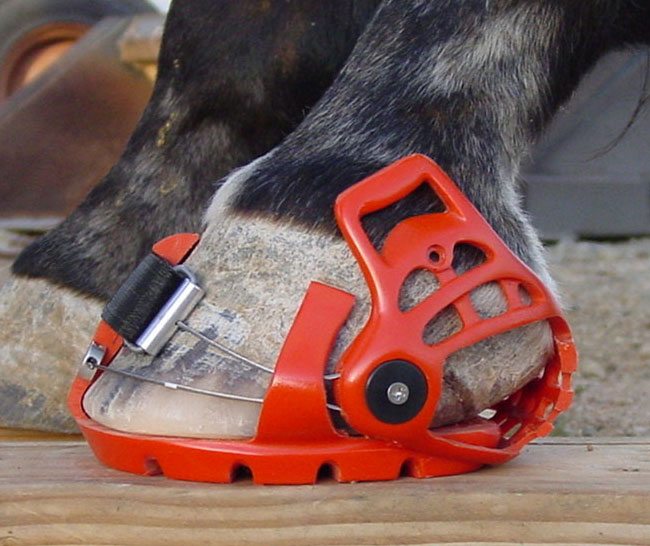
2. Shown above, the heel captivator is incorrectly positioned too low. Most obviously this position applies uneven pressure to the heel bulbs and lateral cartilages which may lead to bruising. This position also poorly captures the heel bulbs leading to boot retention problems. If you are experiencing boot retention problems or bruising of the heel bulbs or lateral cartilages, ‘too low’ of a heel captivator position may be the source of your problem.
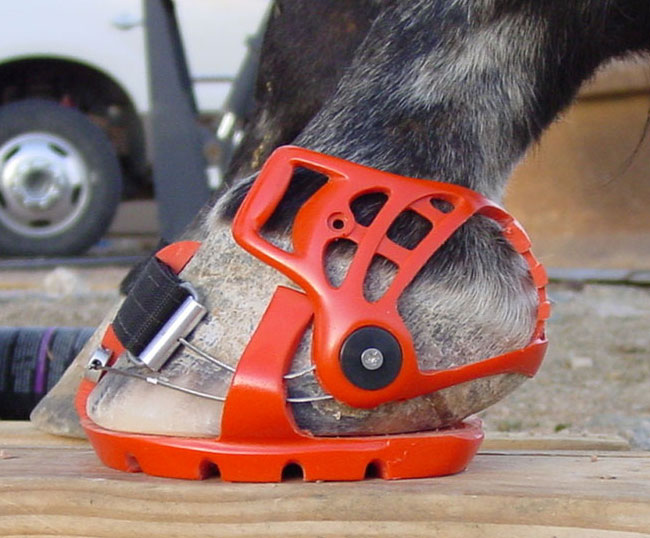
3. Shown above: The heel captivator is incorrectly positioned too high which reduces clearance for pastern bones to descend and applies uneven pressure to the heel bulbs. If you observe rubbing on the back of the pastern bone, too high of a heel captivator position may be the source of your problem.
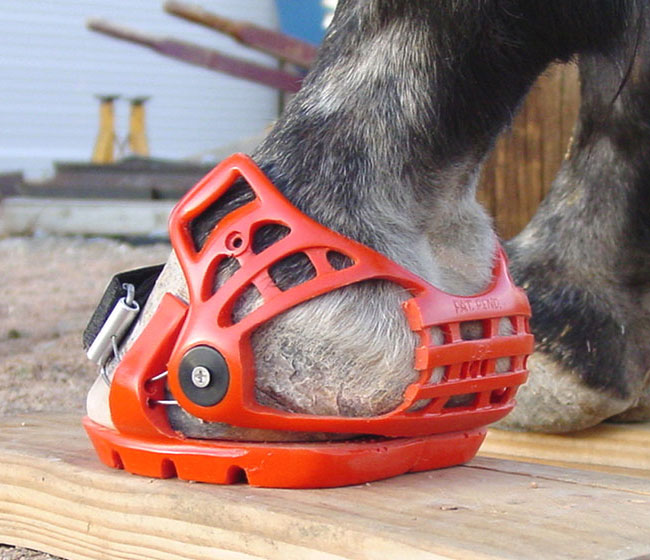
4. Above: Correct heel captivator height. Respect for the soft tissue maximized. Boot retention capability optimized.
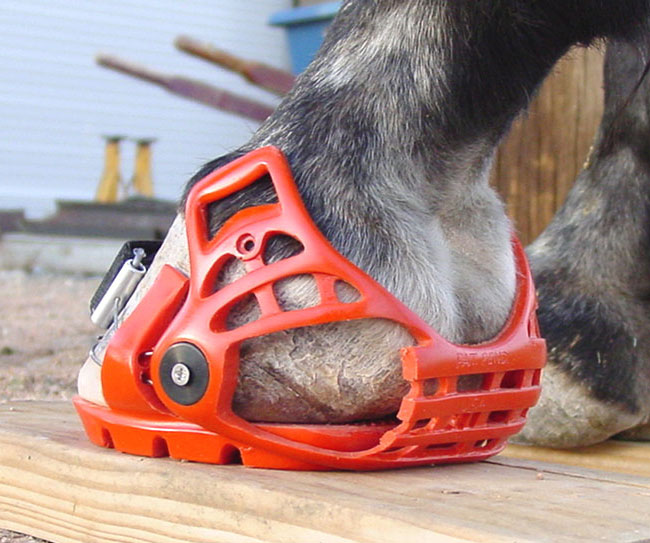
5. Above: Heel captivator position incorrectly too low! Obvious in this view is how the heel captivator can apply concentrated pressure to the heel bulbs. Also obvious is the likelyhood for poor boot retention especially at faster speeds.
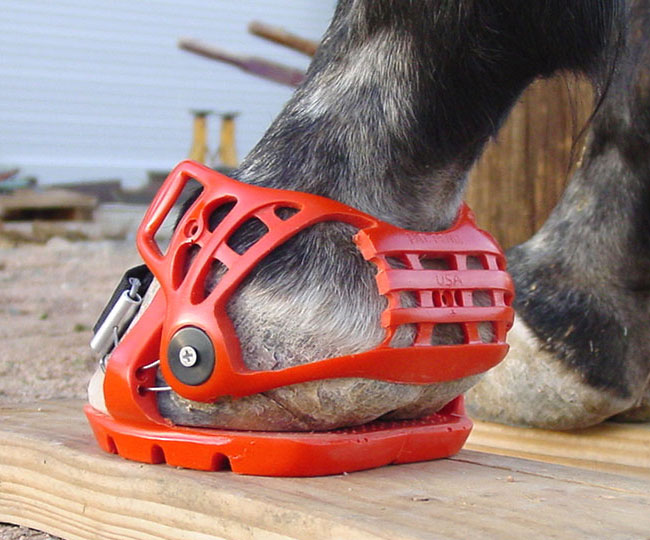
6. Above: Heel captivator position incorrectly too high which can lead to bruising of the tissue covering the pastern bone, especially for long distance use. Understand that the pastern bones descend downward considerably during various gaits.
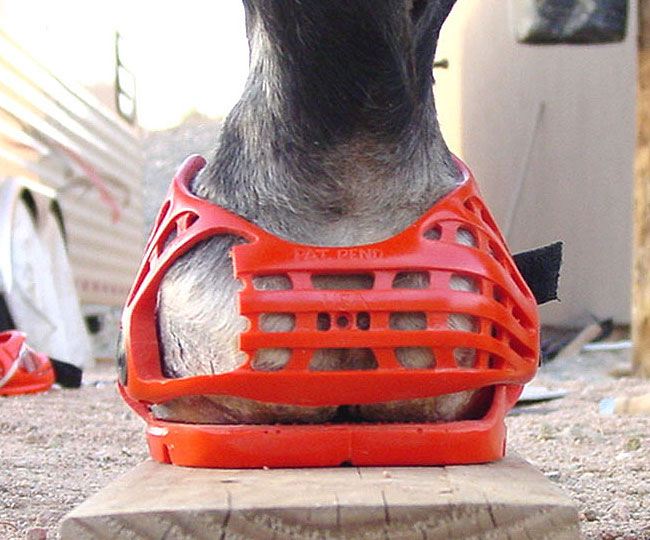
7. Above view: Correct heel captivator position.
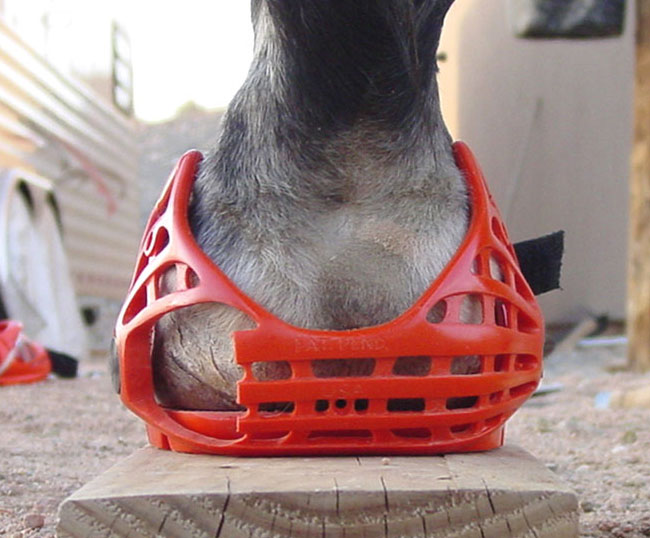
8. Above: Heel captivator incorrectly positioned too low.
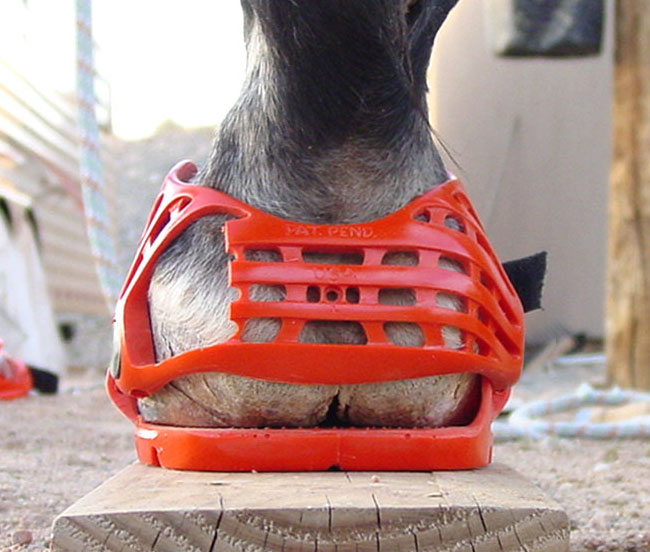
9. Above: Heel captivator incorrectly positioned too high.
